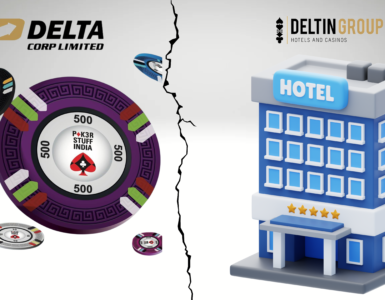When businesses were simple and transactions were local, accounting standards were simple and local GAAP (generally accepted accounting principles) were sufficient. Today, businesses have become complex and a globalised world needs comprehensive accounting standards that can be consistently applied globally and facilitate comparability. To achieve this objective, India made a commitment towards the convergence of Indian accounting standards with International Financial Reporting Standards (IFRS) at the G20 summit in 2009. In accordance with this, the Ministry of Corporate Affairs (MCA) has notified Company (Indian Accounting Standard) Rules 2015 in February 2015; Ind-AS 39, and has laid down an Ind-AS transition roadmap. The IFRS converged Ind-AS has numerous carve-outs to accommodate Indian business nuances. Introduction of Ind-AS is not just ‘good to have’ but is ‘need of the hour’ for India in a globalised world. Change to Ind-AS is a positive move that will bring accounting in India substantially closer to that followed by global companies under IFRS, and provide a more consistent view of Indian operations to investors.
There are many differences between Indian GAAP and Ind-AS because the current Indian GAAP is driven by ‘form’ in a number of areas rather than ‘substance’, which is the focus under Ind-AS. One such critical area that would have a transformational impact on transition to Ind-AS is adoption of fair values. Fair valuation is mandatory for certain assets like equity shares held as investments, stock in trade; whereas it is optional in case of property, plant, and equipment, intangible assets, equity shares of joint ventures, associates, subsidiaries etc. Under the extant Indian GAAP, assets were accounted at historical cost and revaluation was voluntary and exceptional.
Another critical area under Ind-AS is accounting for ‘business combination’. Under Indian GAAP, there is no comprehensive standard for business combinations. There are separate standards that deal with amalgamation and assets acquisition. Further, Indian GAAP did not provide any specific standard for demerger accounting. Ind-AS 103 ‘business combination’ now provides for a comprehensive guidance on accounting for all forms of business combinations including demergers. Ind-AS 103 requires all business combinations within its scope to be accounted at fair value under the purchase method, excluding business combinations under common control, which are to be accounted at book value using pooling of interest method.
Under the Indian tax laws (ITL), demergers are considered tax-exempt if specified conditions are fulfilled. ITL requires, inter alia, transfer of properties and liabilities of demerged undertaking to the resulting company at book values. ITL further requires that while determining the book values, any change in value of assets consequent to revaluation shall be ignored. Demerger under Ind-AS regime pose unique challenges from tax perspective. Mandatory ‘pooling of interest method’ for demergers between related parties is beneficial from tax perspective since it will satisfy the condition under ITL. However, there could be challenges if some of the assets of demerged company have been fair valued in the past under the mandate of Ind- AS. Transfer of such assets at revalued amounts under ‘pooling of interest’ method may not comply with the conditions of tax neutral demerger. Similarly, mandatory ‘acquisition method’ for demergers between unrelated parties would be in conflict with conditions for tax neutral demerger since resulting company would have to record assets at fair value. It may be explored to overcome the aforesaid challenge by providing for desired accounting treatment in the demerger scheme put forth before the court to ensure compliance with conditions for tax neutral demerger under ITL. However, procedurally, there may be a challenge in adopting the aforesaid route, especially in cases where statutory auditor’s certificate certifying the compliance with accounting standards is required as a part of the court approval process.
Another challenge under Ind- AS is a possible re-characterisation of demerger as dividend distribution of non-cash assets to shareholders by demerged company. This is because pursuant to the demerger, shareholders of demerged company receive shares of the resulting company which represents value of the demerged undertaking. Accordingly, Ind-AS may require demerged company to recognise dividend liability and credit the difference between carrying value & fair value of demerged undertaking to profit & loss account (P&L). Additionally, shareholders falling under Ind-AS regime may need to record shares of resulting company at fair value with a corresponding credit to P&L. ITL also provides for Minimum Alternate Tax (MAT), which is a minimum tax levy on ‘book profits’ of the company.
Recognition of credit to P&L by demerged company and shareholders raises an issue on MAT applicability unless a specific downward adjustment is introduced under MAT provisions of ITL. Central Board of Direct Taxes (CBDT) has formed a committee to suggest framework to compute ‘book profit’ which constitutes tax base for MAT levy for companies converging to Ind-AS. As of today, while the committee has published a report with its recommendations, which is open for public comments, it has not provided any recommendation for impact pursuant to demergers. As the companies are transitioning to Ind-AS, there is an urgent need in the forthcoming Budget to amend the definition of ‘demerger’ under the ITL and ensure harmony with the accounting standards so as to not render demergers redundant. This will ensure certainty for the stakeholders. We hope that the government would take immediate note of India Inc’s needs and ensure ‘ease of doing business’ in corporate restructuring arena too.
SOURCE: FINANCIAL EXPRESS (Originally written by Amrish Shah)




